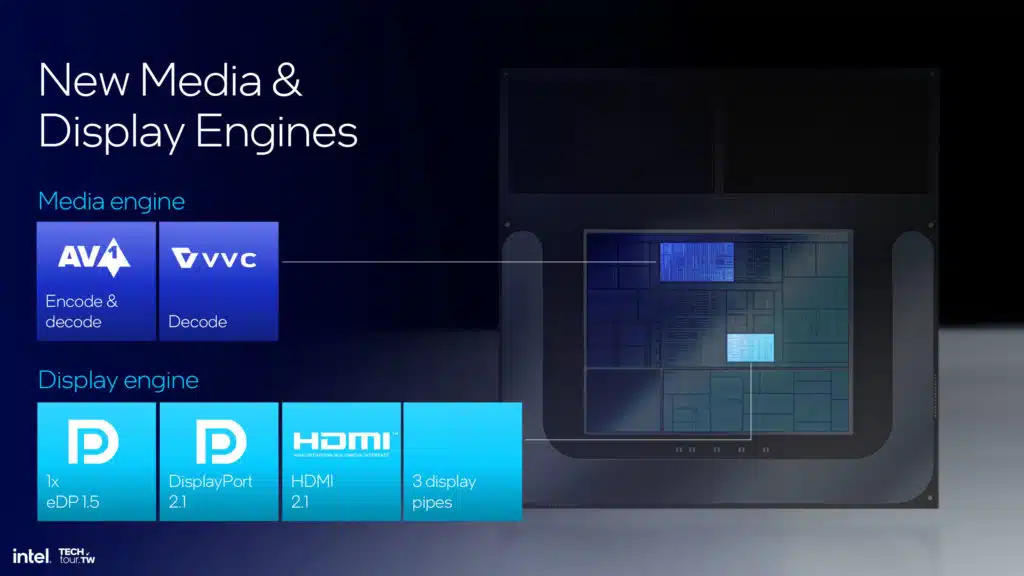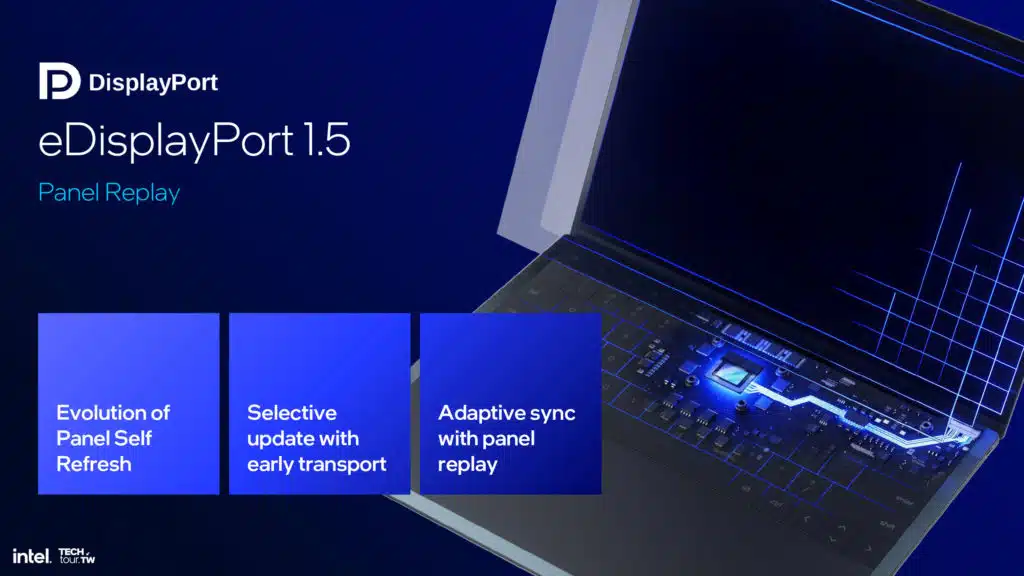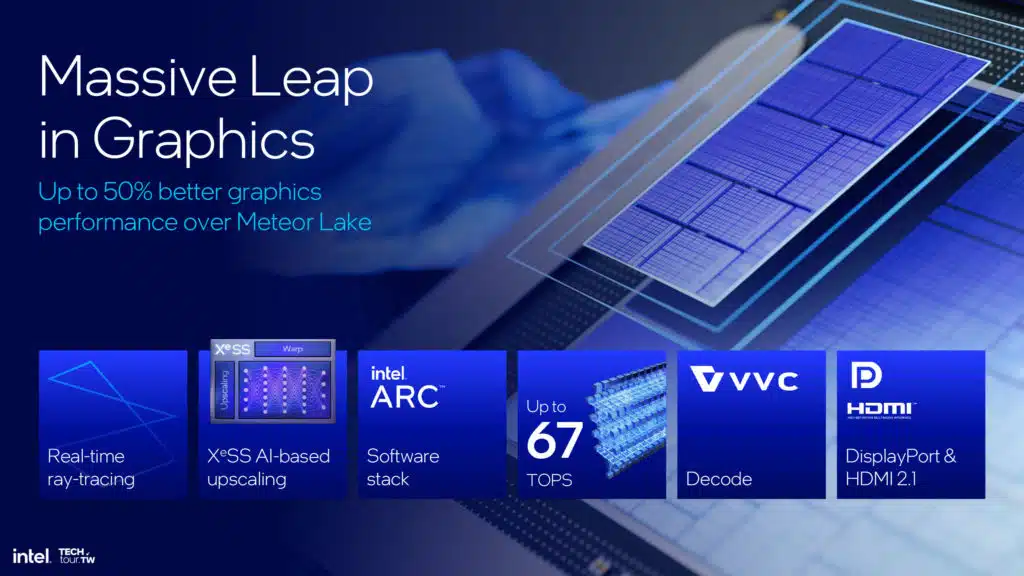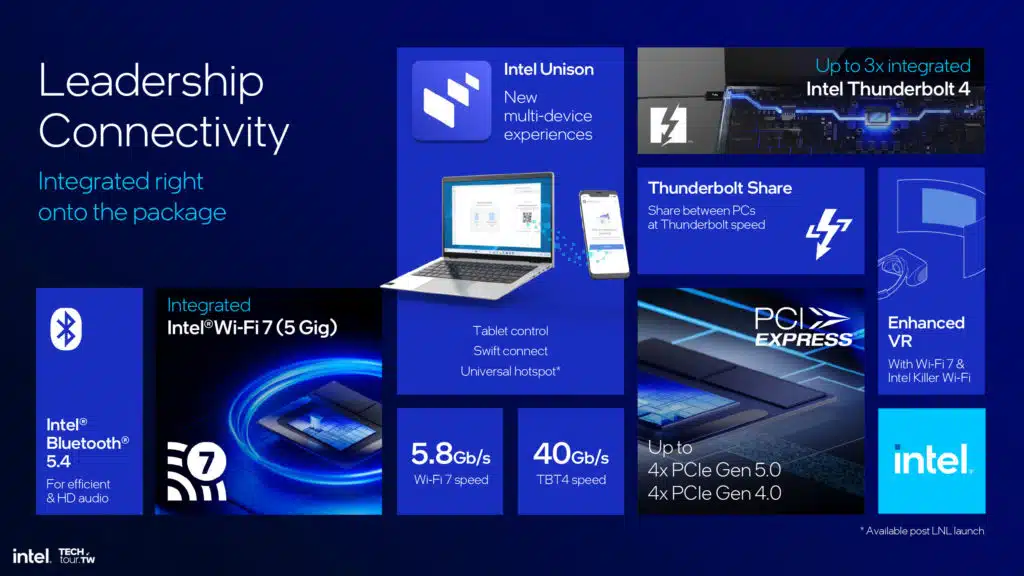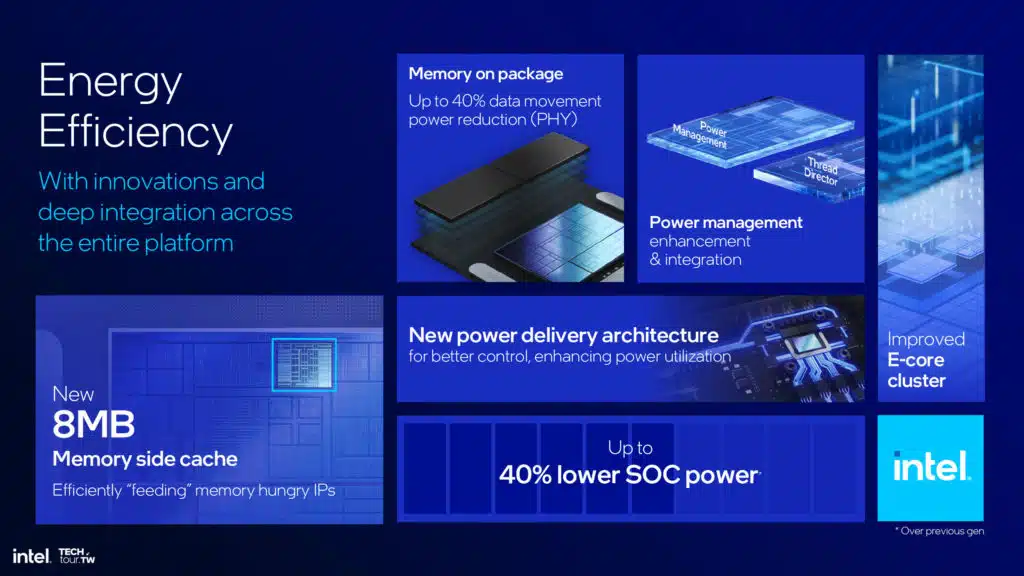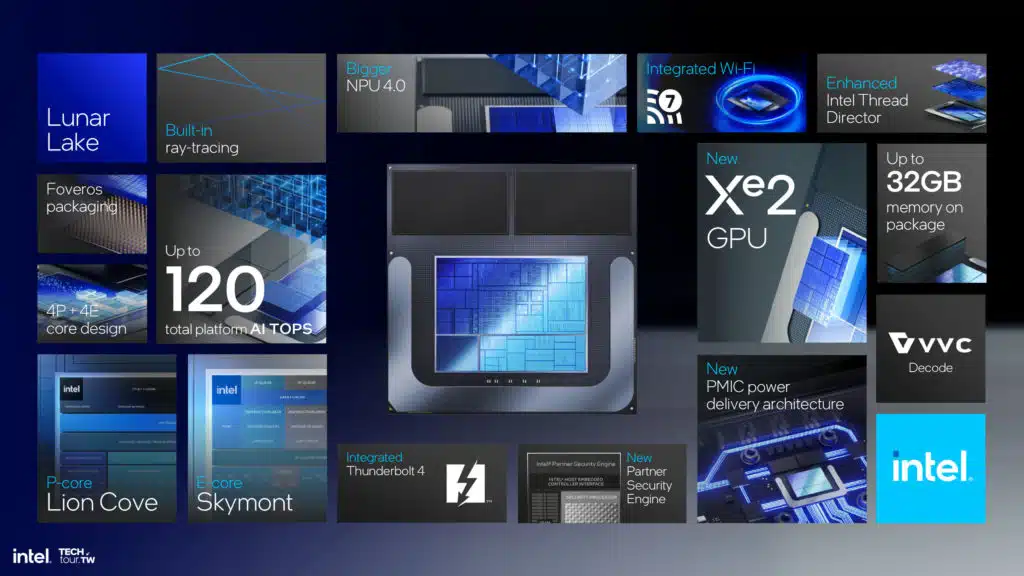
Introduction
Intel is at Computex 2024 this year, with many presentations and announcements. While there is certainly a lot of material to go through coming from Intel, in today’s article we are going to focus solely on Lunar Lake, which we think may be the most interesting breakdown for our audience. However, if you wish to learn more about other Intel products, including Gaudi and Xeon products, be sure to check Intel’s site for more information. We also have the full press deck slides posted for the component architectures in Lunar Lake on the following four pages, without commentary, if you wish to view them in-depth for a deep-dive breakdown of the features.
Lunar Lake

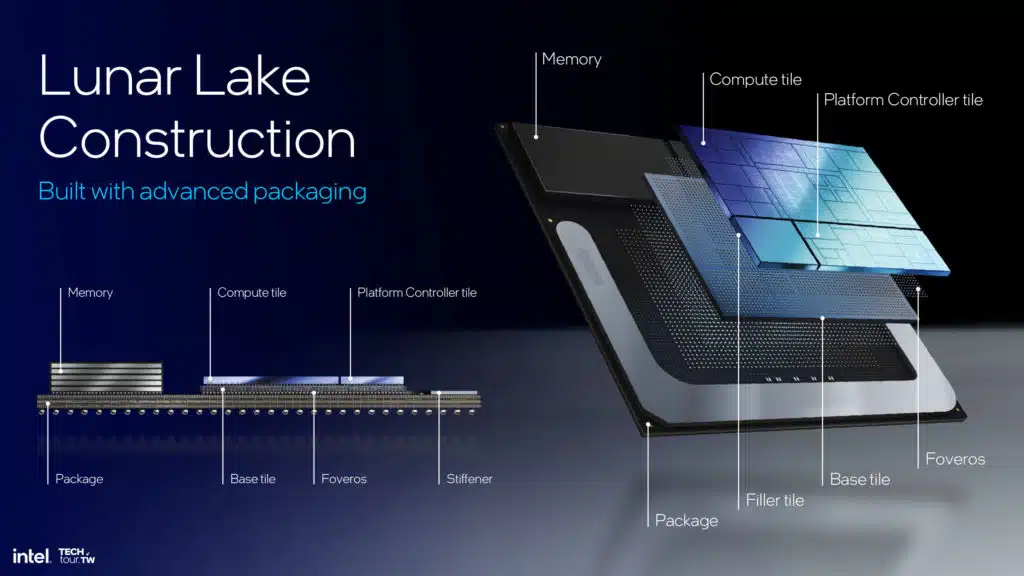
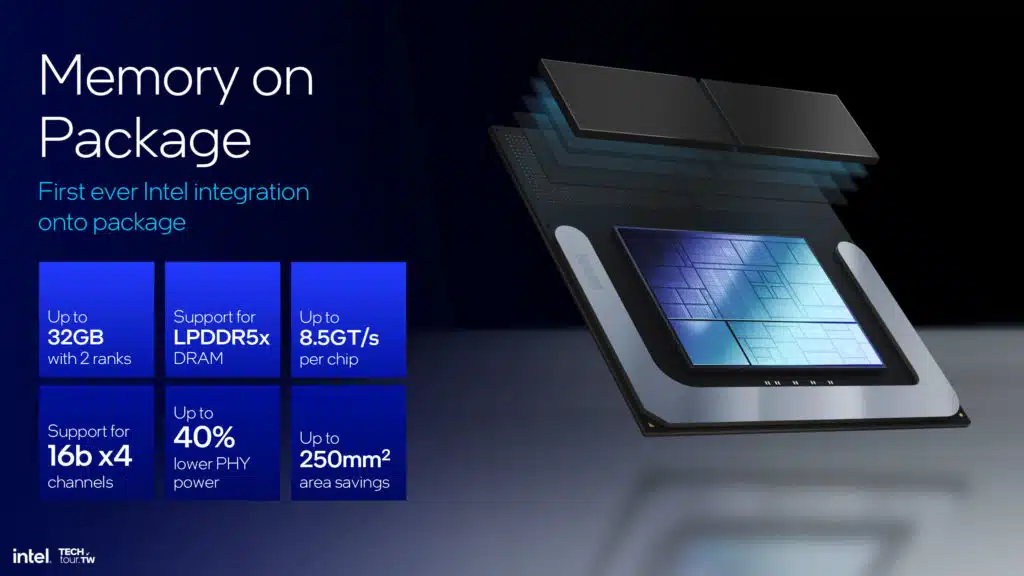
Intel Lunar Lake will be Intel’s entry for its next-gen AI PCs, which means laptop and mobile platforms. The basic tenants and goals for Lunar Lake are better power efficiency, core performance, graphics performance and AI compute performance. Lunar Lake can be divided into these categories and is composed of many tiles. The construction is quite complex as you can see, with memory, compute tile and platform controller tile. The package does contain memory on the package with up to 32GB with 2 ranks and support for LPDDR5x DRAM which provides 8.5GT/s per chip.
Lion Cove P-core
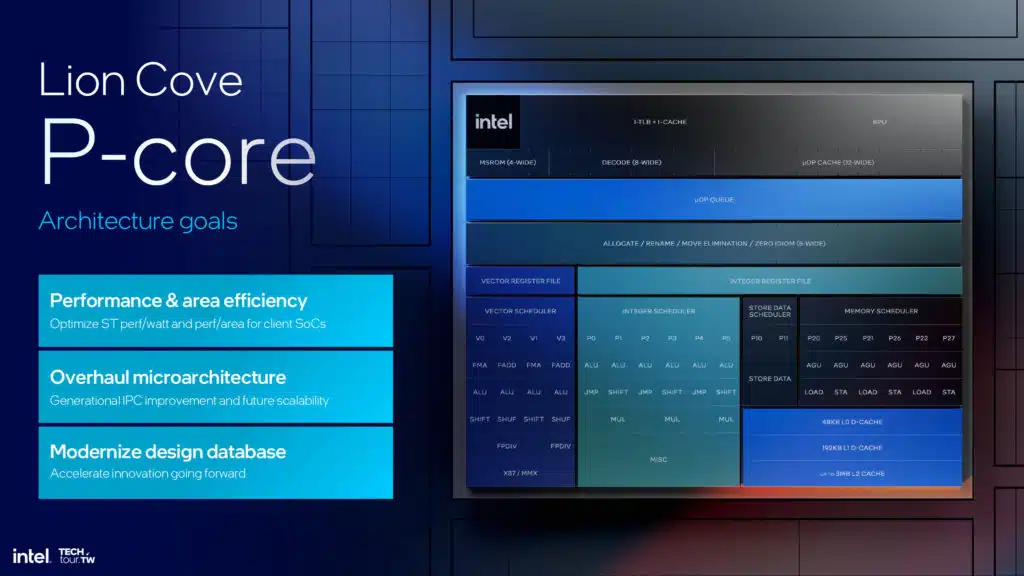
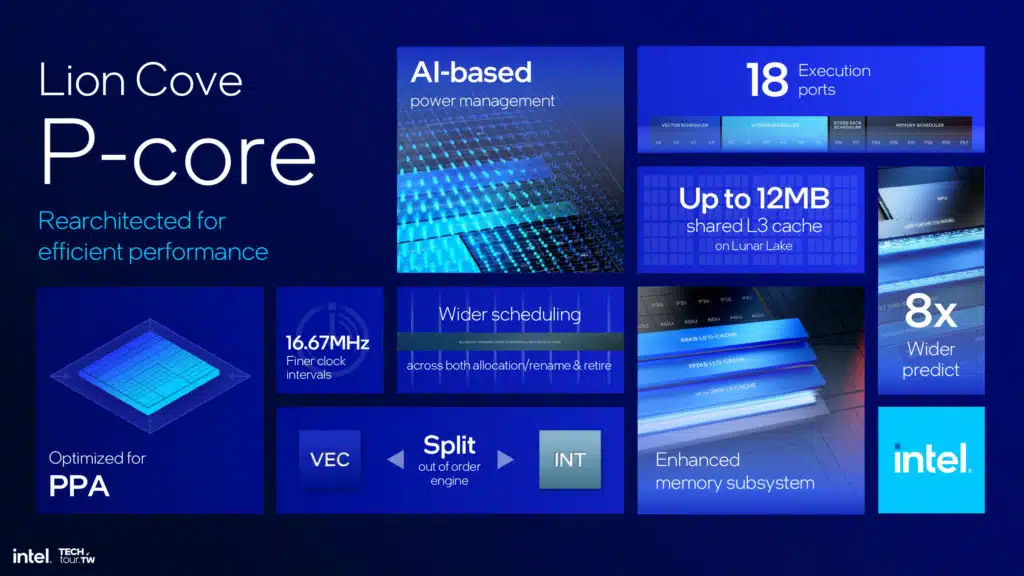
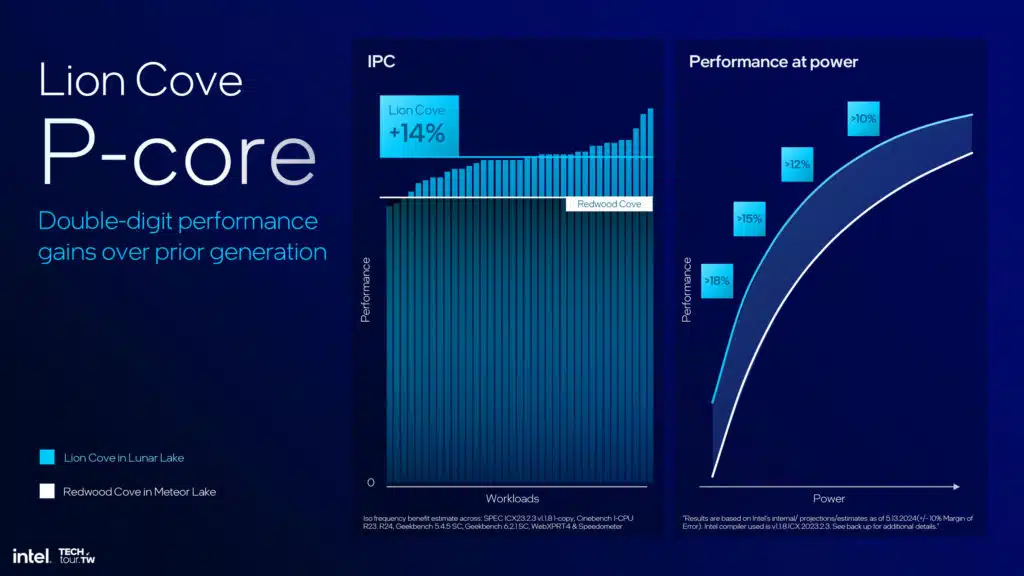
At the heart of Lunar Lake are the Lion Cove P-cores. The architecture goals of Lion Cove is to optimize ST perf per Watt and Perf per Area. The microarchitecture has been overhauled for generational IPC improvements. Key features of the architectural improvements include a finer clock interval, wider scheduling, split out of order engine, 18 execution ports, 8x wider predict, enhanced memory subsystem, and up to 12MB of shared L3 cache. Intel is claiming double-digit performance gains over the prior generation showing a +14% IPC uplift over Redwood Cove with a better power-to-performance profile.
Skymont E-core
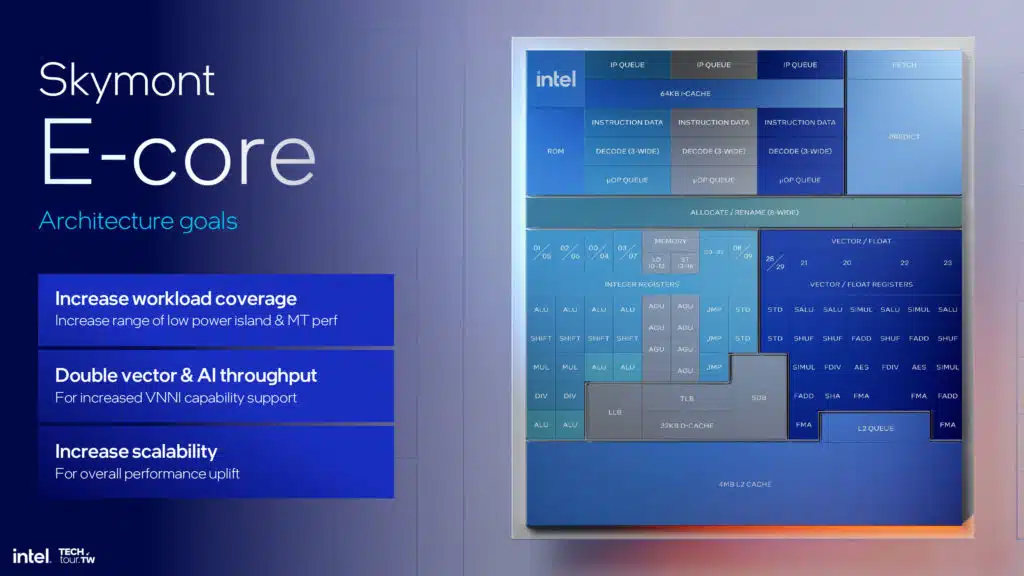
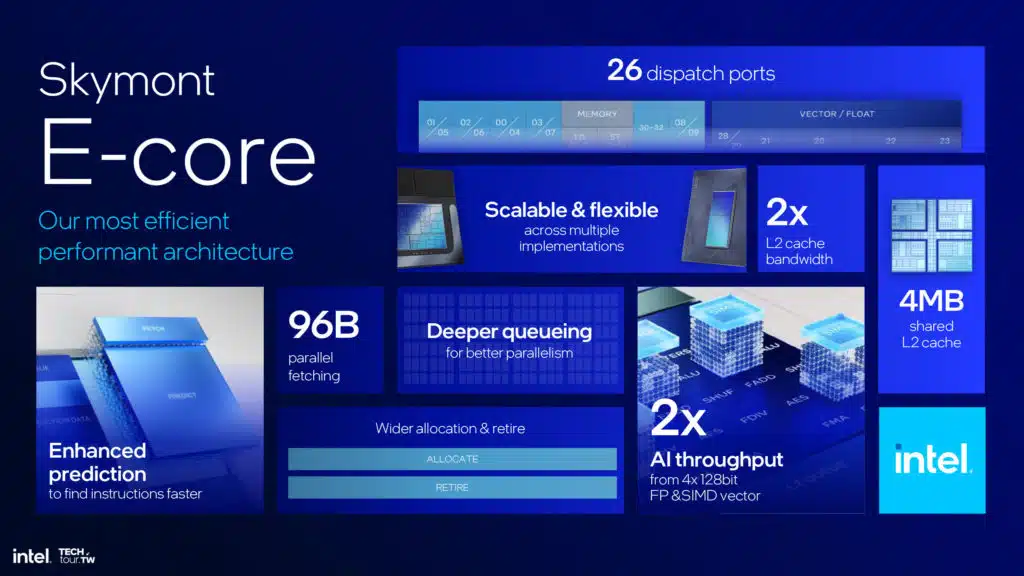
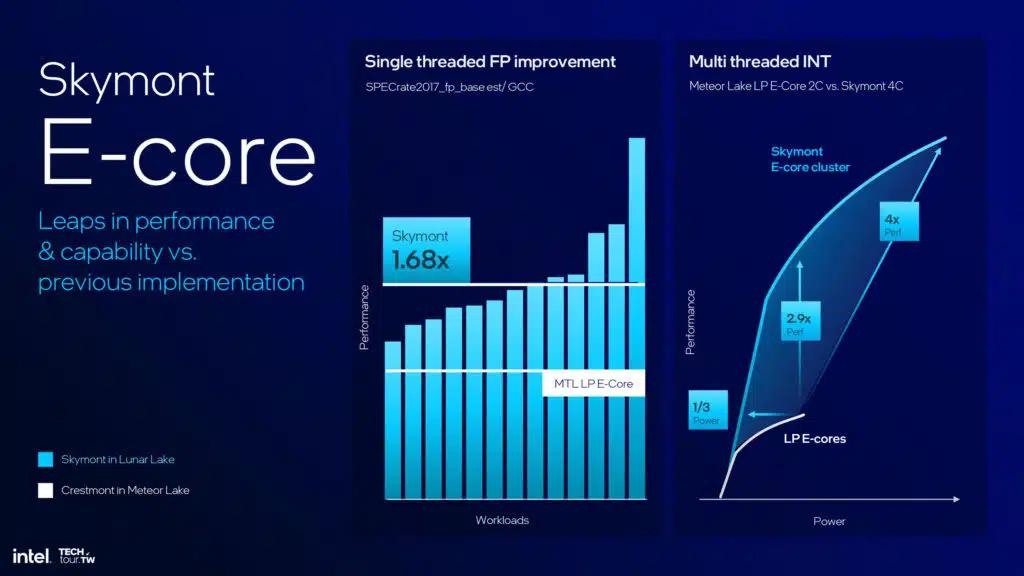
Lunar Lake still uses the P-core and E-core design, and the new E-cores in Lunar Lake are based on the Skymont architecture. The design goals of Skymont are an increased workload coverage of low power island and MT performance, double vector and AI throughput, and increased scalability. Key features of the Skymont architecture is enhanced prediction, deeper queuing, wider allocation and retire, 96B parallel fetching, 2x L2 cache bandwidth, 26 dispatch ports and 4MB of shared L2 cache. Intel is claiming Skymont is 1.68x the performance of Meteor Lake’s E-Core also with a better power to performance profile.
Thread Director
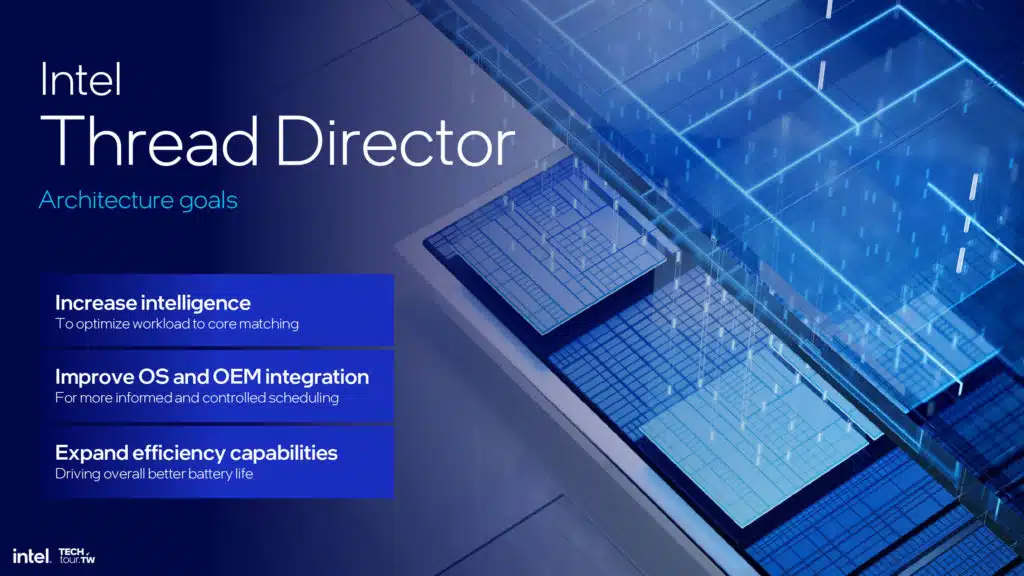

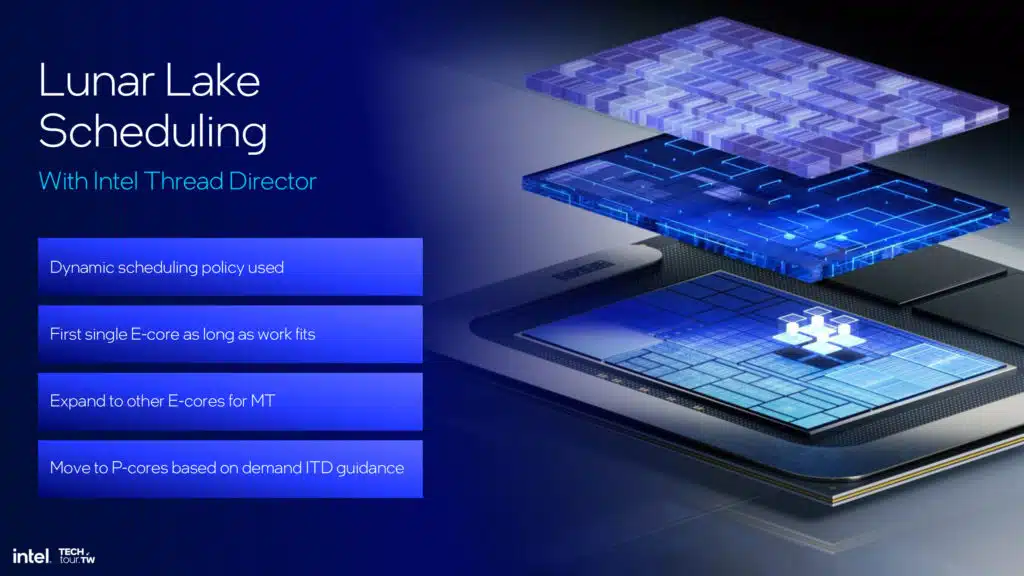

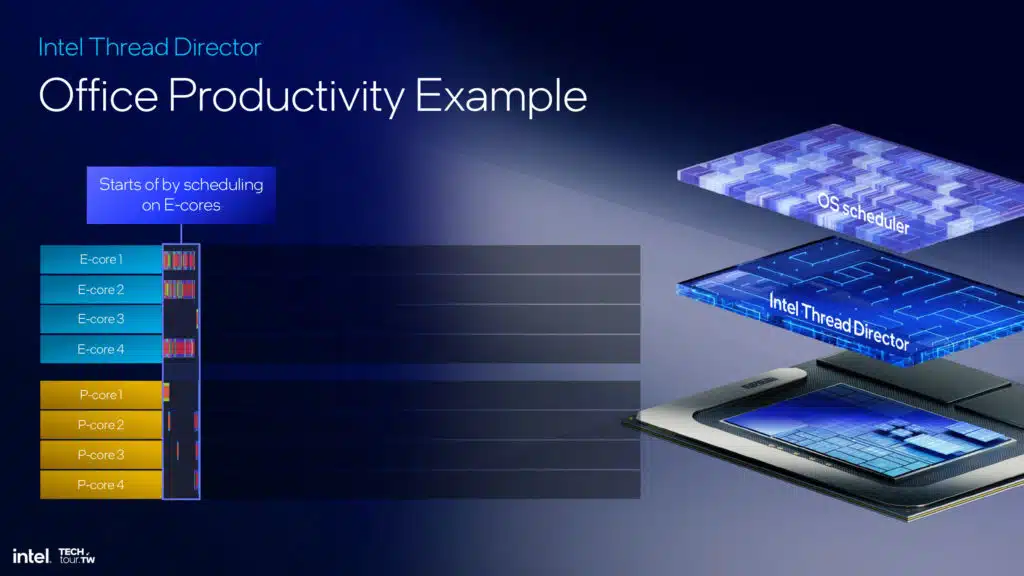
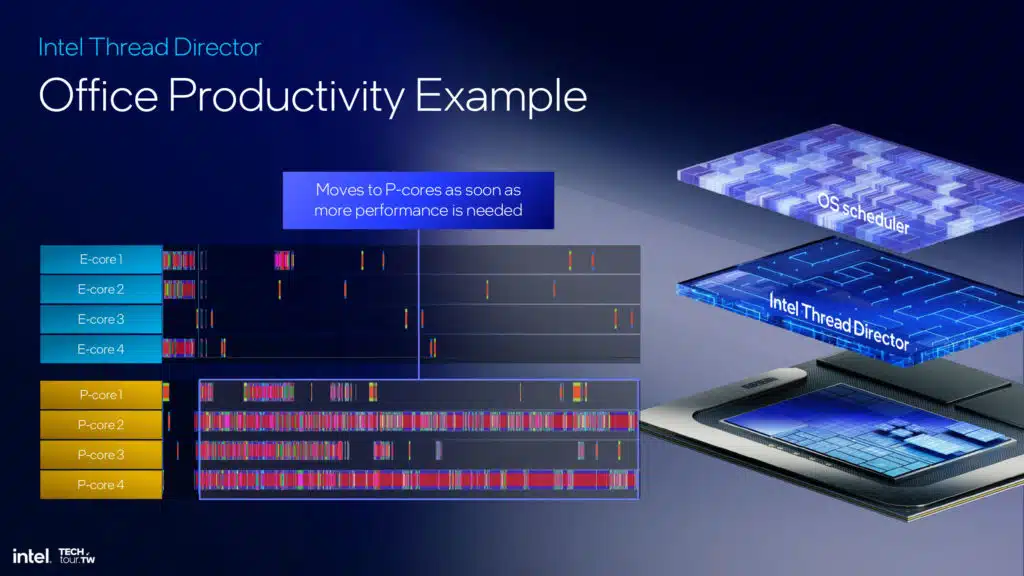
Similar to the previous generation, Intel Thread Director is at play and has been improved to optimize workload to core matching and improved OS and OEM integration. It has improved power management as well as enhanced algorithms and a finer granularity. Lunar Lake scheduling uses dynamic scheduling policies that use the first single E-core as long as the work fits and then can expand it into other E-cores for multi-threading, and eventually move it to the P-cores based on the demand.
Xe2 GPU
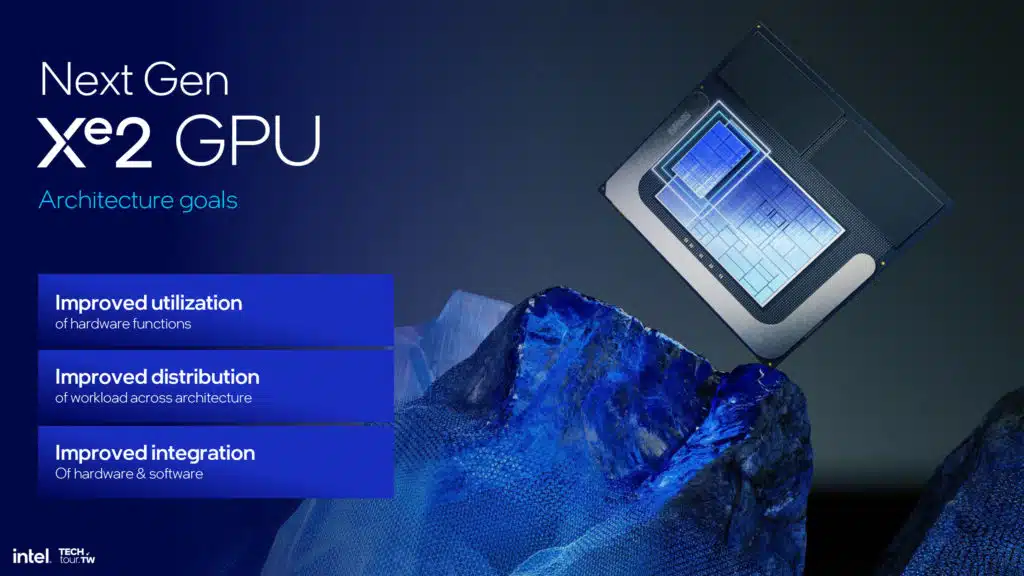
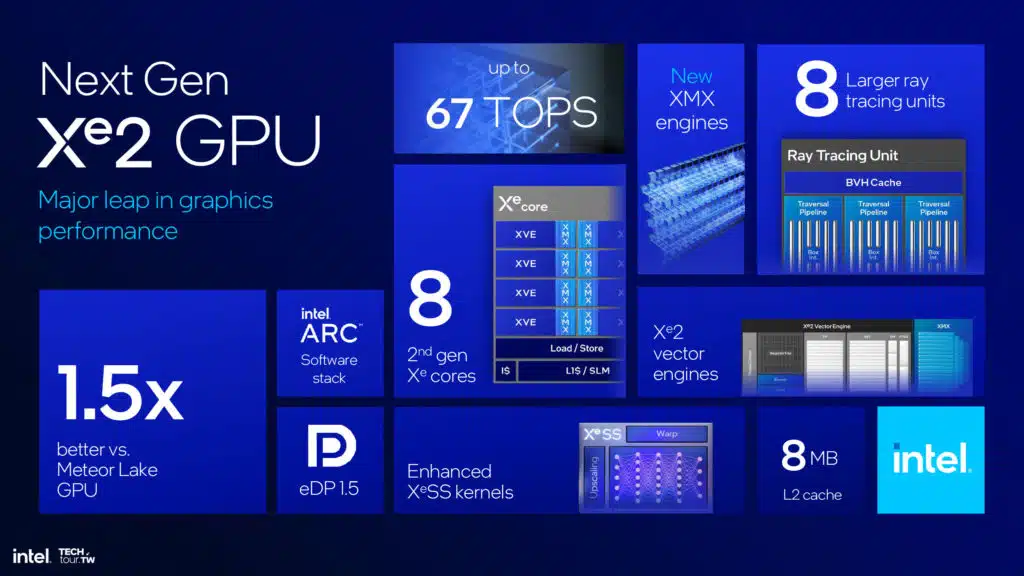


One of the key new features in Lunar Lake is the Xe2 GPU or Battlemage. It has improved hardware functions, improved distribution, and improved integration. Intel claims 1.5x better compared to Meteor Lake’s GPU. It is based on 8 2nd gen Xe cores with 8 larger ray tracing units and a new XMX engine and new Xe2 vector engines with 8MB of L2 cache. It is based on the Intel Arc software stack and enhanced XeSS kernels. The new vector engine provides better efficiency and AI performance at up to 67 TOPs.
Media & Display Engine
NPU 4
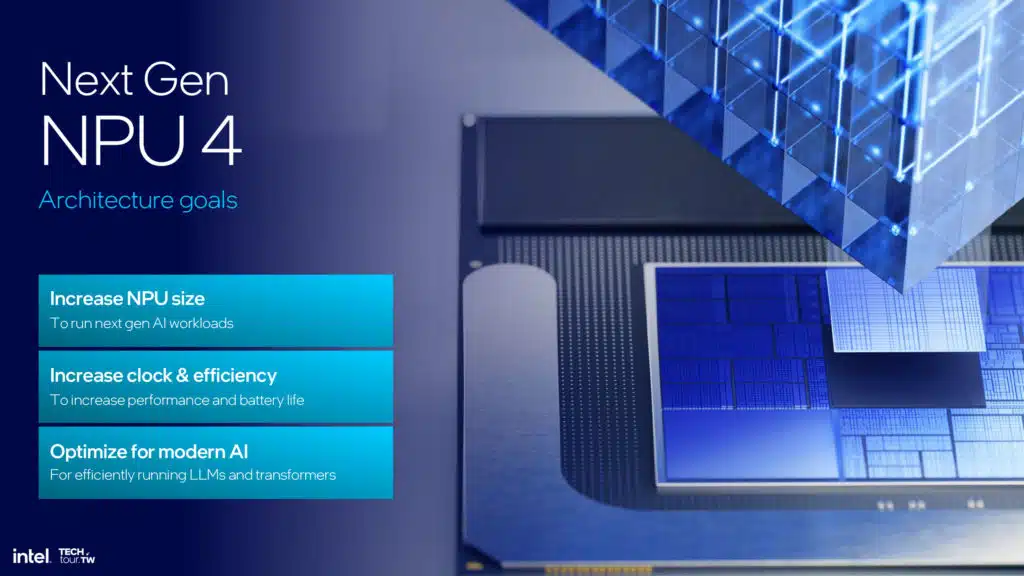
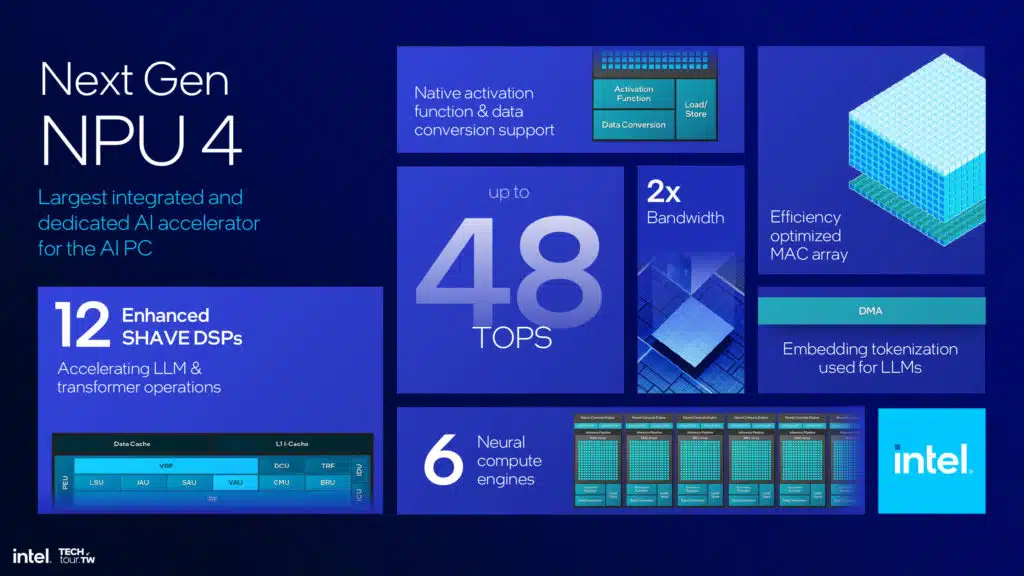
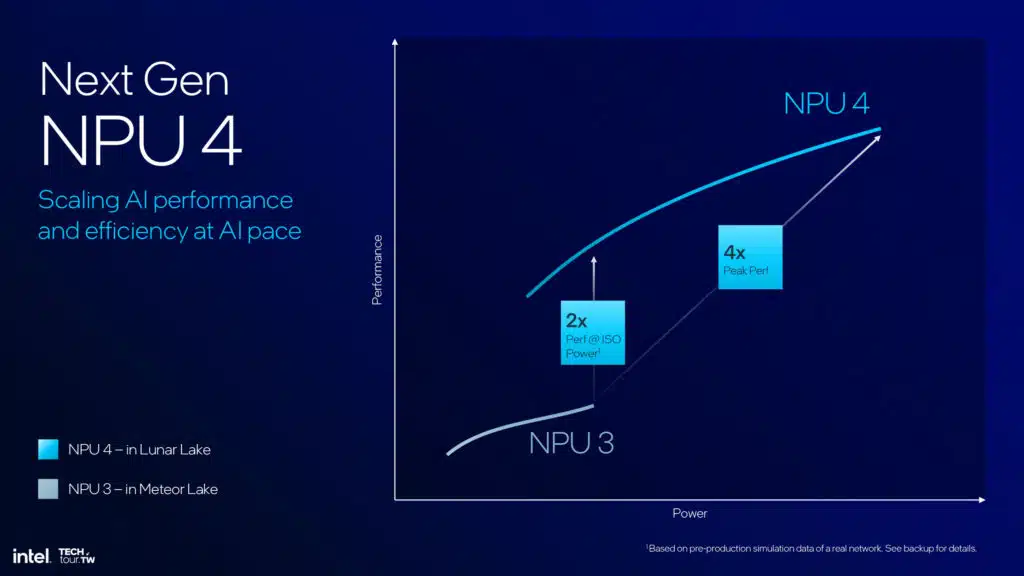
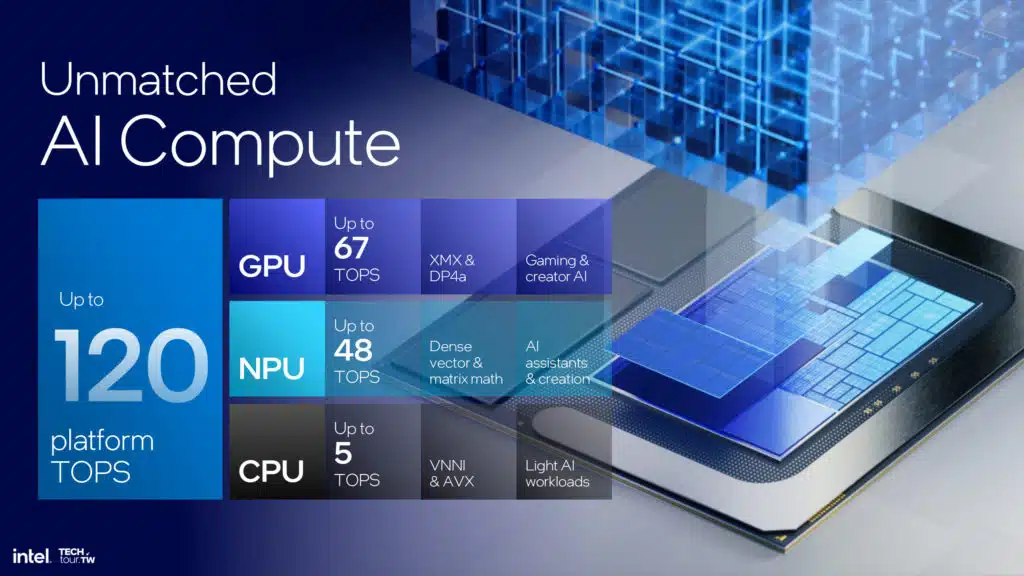
Intel’s NPU architecture goals were to increase the NPU size, increase clock and efficiency, and optimize for modern AI. This is achieved through 12 enhanced SHAVE DSPs, native activation function and data conversion support, 6 neural compute engines, 2x the bandwidth, and efficiency optimized MAC ready delivering up to 48 TOPs. Intel quotes the GPU at up to 67 TOPs, the NPU at up to 48 TOPs and the CPU at up to 5 TOPs.
Connectivity
Efficiency
Conclusion
We were at Computex 2024 this year, and snagged a couple of videos at ASUS’s booth of a couple of laptop motherboards showcasing Intel’s Lunar Lake, here’s what it looks like on the motherboard.
Architecture Deep Dive
If you want to undertake a deep dive into the architectures, we are going to post the full complete slide deck presentation for the P-cores, E-cores, NPU, and Xe2 GPU on the following four pages. We will post just the slide deck without commentary so that you may study them or look at them for your own education and knowledge or interest. They go pretty deep on explaining the new architecture and are worth a look.

